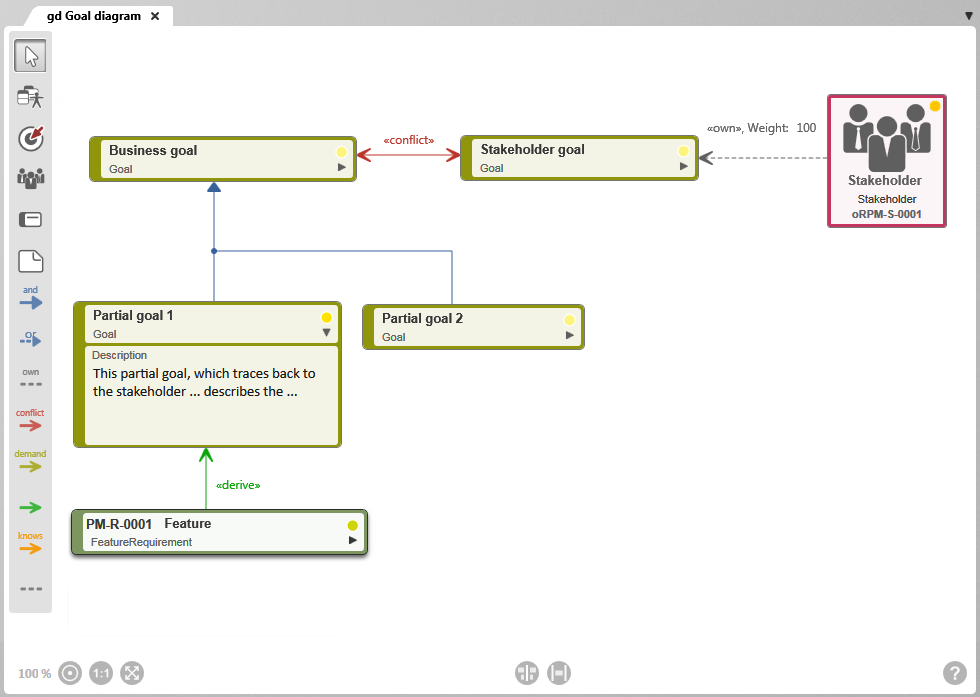The Goal Diagram
Goal diagrams show relationships, dependencies and conflicts between the goals of a system, as well as the intention and the weight which stakeholders have placed on the goals. Goal diagrams can increase the overall acceptance of a system by giving those involved a better understanding of the scope and goals that the system will have. They make it easier to assess the relevance of prospective goals and can be used as a possible starting point for the definition of requirements. The weight of goals as related to stakeholders makes it easier to prioritize goals.
The dialog can be opened:
- via the context menu of a package with Create diagram/ Goal Diagram

